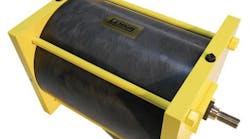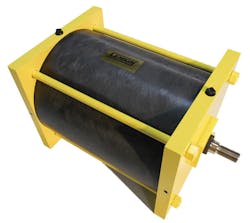You’ll find some of the largest fluid circuit lines in the world at refineries and large-scale chemical processing plants, where miles of large-diameter tubing is commonplace. Because it is clean, safe, compact, and powerful, pneumatics is widely used to actuate large valves in these applications. Lehigh Fluid Power, Lambertville, N. J., provides a wide variety of cylinders for use in valve actuators.
Lehigh’s VAC cylinder line comes in carbon and stainless steel, and a lightweight version has a barrel made of lightweight composite. VAC cylinders are available in standard bores from 8 to 16 in. All use Lehigh’s Miraclube feature, a system that self-lubricates the rod and piston bearings with a nontoxic lubricant that will not attack seals or fuse seals to the tube ID if the piston remains in one position for an extended length of time.
For more information on Lehigh Fluid Power’s VAC cylinders, call (800) 257-9515 or visit lehighfluidpower.com.


